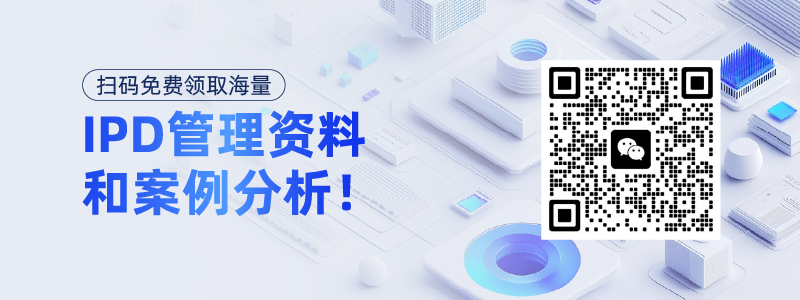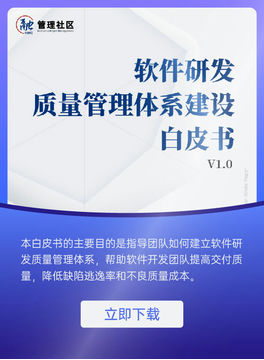Xiaomi's Integrated Product Development (IPD) process is a comprehensive and systematic approach that aims to bring products from concept to market efficiently. At its core, the IPD process emphasizes cross-functional collaboration, concurrent engineering, and a structured approach to product development. This process is designed to ensure that all aspects of product development, from design and engineering to marketing and sales, are coordinated seamlessly.
The IPD process at Xiaomi starts with a clear understanding of market needs and customer requirements. Through extensive market research and customer feedback, Xiaomi identifies opportunities for new products or improvements to existing ones. This initial phase sets the foundation for the entire development process, as it defines the product's features, performance, and target market.
Once the market needs are identified, Xiaomi's IPD process moves into the concept development stage. Here, cross-functional teams work together to generate ideas and concepts for the new product. These teams typically include representatives from engineering, design, marketing, and other relevant departments. By bringing together diverse perspectives, Xiaomi can develop innovative and competitive product concepts.
Importance of Risk Management in Xiaomi's IPD Process
Risk management is a crucial aspect of Xiaomi's IPD process. In the highly competitive and rapidly evolving technology industry, there are numerous uncertainties and potential risks that can impact the success of product development. Effective risk management helps Xiaomi anticipate and address these risks, minimizing their negative impact on product quality, schedule, and cost.
One of the key reasons why risk management is important in Xiaomi's IPD process is to ensure product quality. By identifying and managing risks early in the development cycle, Xiaomi can prevent issues from arising that could compromise the functionality, reliability, or usability of the product. This helps to build customer trust and loyalty, as customers expect high-quality products from Xiaomi.
Another important aspect of risk management in Xiaomi's IPD process is to manage project schedules. Delays in product development can have significant consequences, including missed market opportunities and increased costs. By proactively identifying and addressing risks that could cause delays, Xiaomi can ensure that products are launched on time, giving the company a competitive edge in the market.
Risk Identification in Xiaomi's IPD Process
The first step in Xiaomi's risk management strategy is risk identification. This involves systematically identifying potential risks that could impact the product development process. Xiaomi uses a variety of techniques and tools to identify risks, including brainstorming sessions, checklists, and historical data analysis.
During brainstorming sessions, cross-functional teams come together to generate a list of potential risks. These sessions encourage open communication and the sharing of ideas, allowing team members to identify risks from different perspectives. Checklists are also used to ensure that all potential risks are considered. These checklists are based on past experiences and industry best practices, and they cover a wide range of areas, such as technology, supply chain, and market competition.
Historical data analysis is another important tool for risk identification in Xiaomi's IPD process. By analyzing data from past product development projects, Xiaomi can identify patterns and trends in risks. This information can be used to predict potential risks in future projects and develop appropriate risk mitigation strategies.
Risk Assessment in Xiaomi's IPD Process
Once risks are identified, the next step in Xiaomi's risk management strategy is risk assessment. This involves evaluating the likelihood and potential impact of each identified risk. Risk assessment helps Xiaomi prioritize risks and determine which ones require immediate attention.
To assess the likelihood of a risk, Xiaomi uses a combination of qualitative and quantitative methods. Qualitative methods involve subjective evaluations based on expert judgment and past experiences. Quantitative methods, on the other hand, use data and statistical analysis to estimate the probability of a risk occurring.
The potential impact of a risk is also evaluated during the risk assessment process. This includes considering the impact on product quality, schedule, cost, and customer satisfaction. Risks that have a high likelihood of occurring and a significant potential impact are given the highest priority.

Risk Mitigation Strategies in Xiaomi's IPD Process
After assessing risks, Xiaomi develops risk mitigation strategies to reduce the likelihood and impact of identified risks. These strategies are tailored to the specific nature of each risk and may involve a combination of preventive and corrective actions.
One common risk mitigation strategy in Xiaomi's IPD process is contingency planning. This involves developing alternative plans and actions that can be implemented if a risk materializes. For example, if there is a risk of a supply chain disruption, Xiaomi may develop contingency plans to source components from alternative suppliers or adjust production schedules.
Another important risk mitigation strategy is risk transfer. This involves transferring the risk to a third party, such as an insurance company or a supplier. For example, Xiaomi may purchase insurance to protect against the financial impact of a product recall or a natural disaster.
In addition to contingency planning and risk transfer, Xiaomi also focuses on risk prevention. This involves taking proactive measures to eliminate or reduce the likelihood of a risk occurring. For example, Xiaomi may invest in research and development to improve the reliability of its products or implement quality control measures to prevent defects from occurring.
Monitoring and Control of Risks in Xiaomi's IPD Process
Risk management is an ongoing process in Xiaomi's IPD process. Once risk mitigation strategies are implemented, it is important to monitor and control risks to ensure that they are effective. This involves regularly reviewing the status of risks, evaluating the effectiveness of mitigation strategies, and making adjustments as needed.
To monitor risks, Xiaomi uses a variety of tools and techniques, including risk registers, status reports, and performance metrics. Risk registers are used to document all identified risks, their likelihood, potential impact, and mitigation strategies. Status reports provide regular updates on the status of risks and the progress of risk mitigation activities. Performance metrics are used to measure the effectiveness of risk mitigation strategies and to identify any trends or patterns in risks.
If a risk materializes or if the effectiveness of a mitigation strategy is questioned, Xiaomi takes corrective action. This may involve adjusting the mitigation strategy, developing new strategies, or escalating the issue to senior management for further decision-making.
Integration of Risk Management with Other IPD Processes
Risk management in Xiaomi's IPD process is not an isolated activity. It is integrated with other key processes, such as product planning, design, and development, to ensure that risks are considered at every stage of the product lifecycle.
During the product planning stage, risk management is used to identify potential risks that could impact the product's success in the market. This information is used to inform product strategy and to make decisions about product features, target market, and pricing.
In the design and development stages, risk management is integrated with quality management and project management processes. By considering risks early in the design process, Xiaomi can make design decisions that reduce the likelihood of risks occurring. Project management processes are also used to ensure that risk mitigation activities are properly planned, scheduled, and executed.
Conclusion
In conclusion, risk management is a critical component of Xiaomi's IPD process. By effectively identifying, assessing, mitigating, monitoring, and controlling risks, Xiaomi can increase the likelihood of product success, improve product quality, meet project schedules, and manage costs. The integration of risk management with other IPD processes ensures that risks are considered throughout the entire product lifecycle, from concept to market launch.
As Xiaomi continues to grow and innovate in the highly competitive technology industry, risk management will remain a key focus. By continuously improving its risk management strategies and processes, Xiaomi can stay ahead of the competition and deliver high-quality products that meet the needs and expectations of its customers. The success of Xiaomi's IPD process and its risk management strategy is a testament to the company's commitment to excellence and its ability to adapt to changing market conditions.
ARTICLE TITLE :Detailed explanation of risk management strategy in Xiaomi's IPD process ,AUTHOR :ITpmlib

















